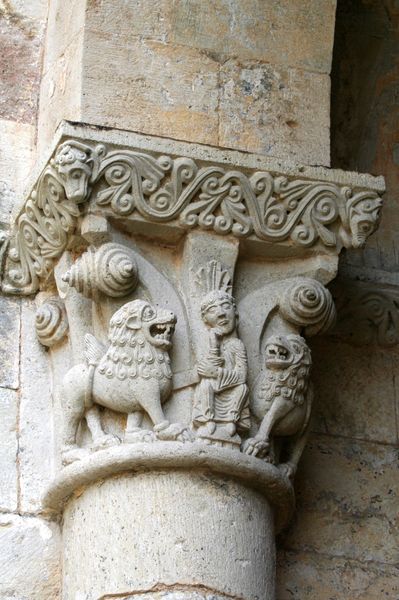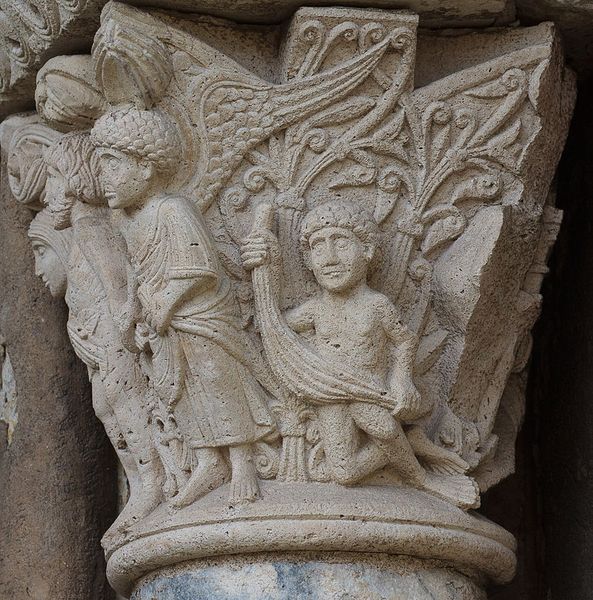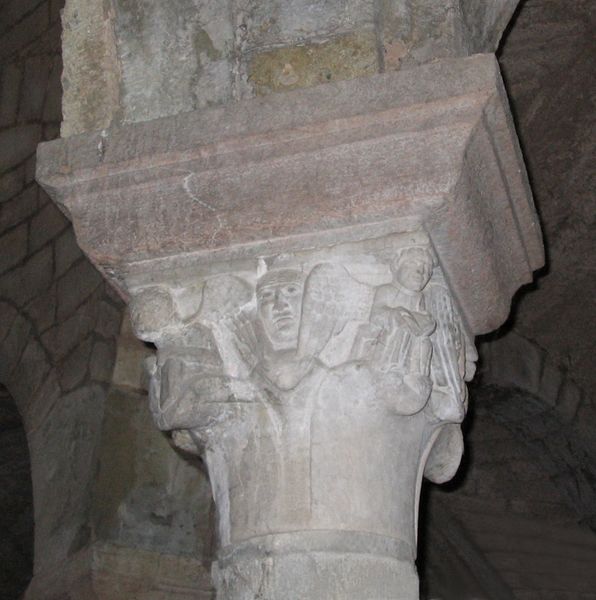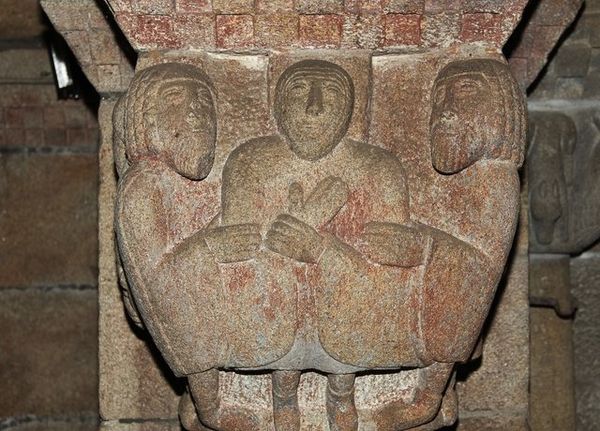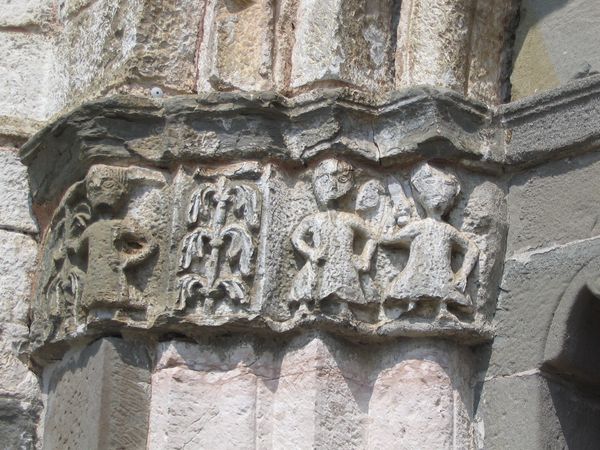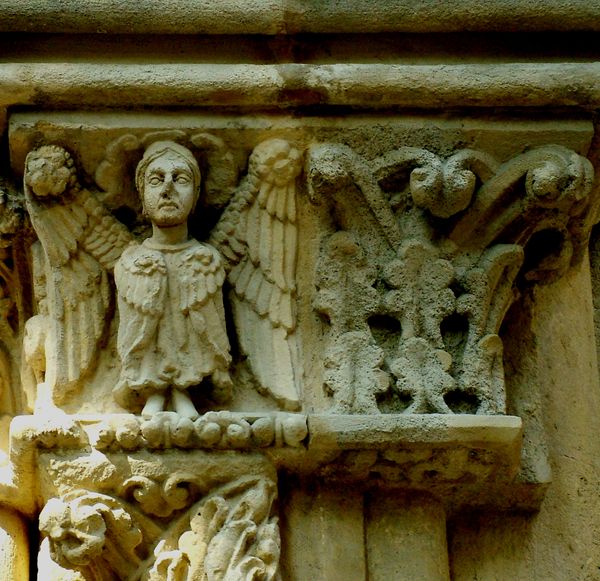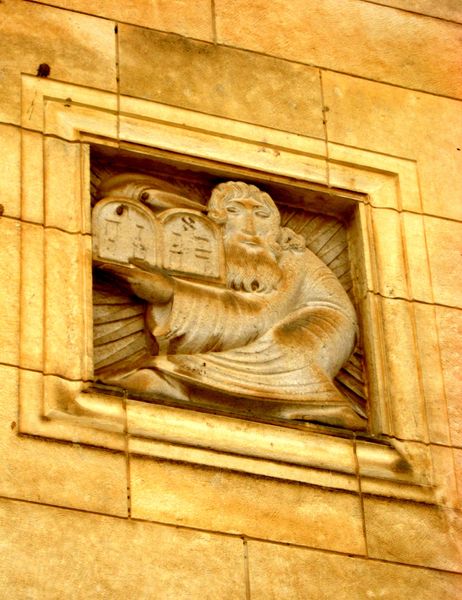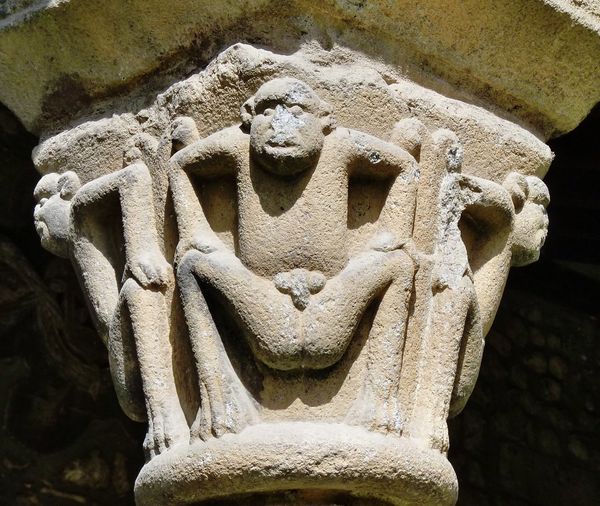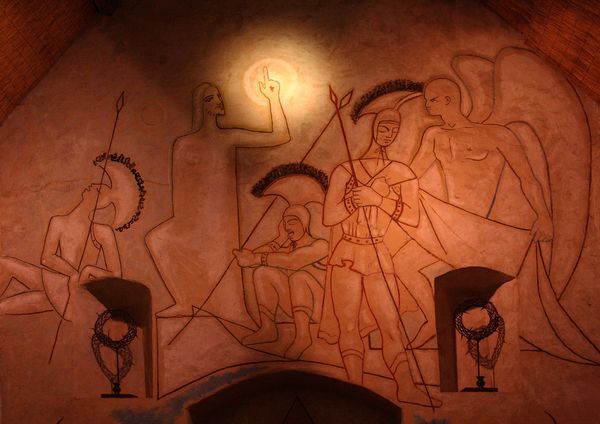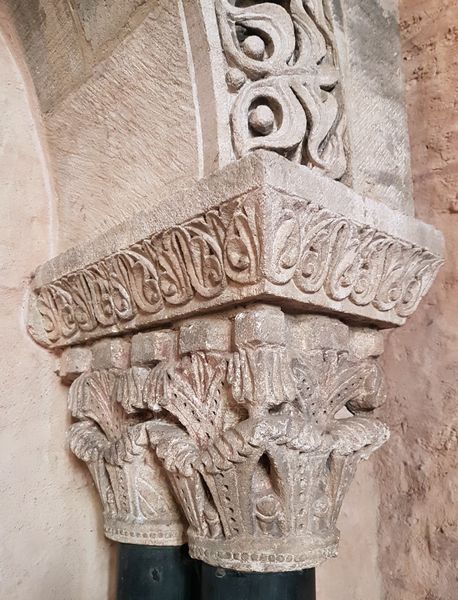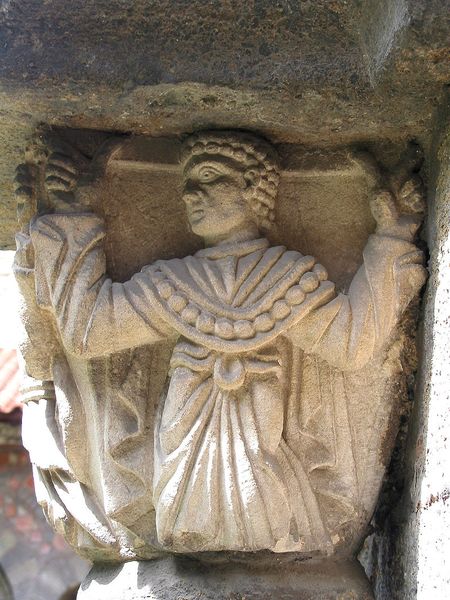
carving, sculpture
#
medieval
#
carving
#
sculpture
#
romanesque
#
sculpture
#
historical building
Copyright: Public domain
Editor: This is a close-up of a capital, carved around 1100, from the Abbey Church of Saint Foy in Conques, France. The sandstone material looks so weighty and solid, yet it’s intricately carved with these figures. What can you tell me about this artwork? Curator: What interests me is thinking about the labour involved in producing this Romanesque capital. The sandstone, obviously sourced locally, would’ve been quarried, transported, then meticulously carved by hand. Can you imagine the sheer amount of manpower that went into creating just this single element, let alone the entire church? Editor: It’s mind-boggling. Were there guilds or workshops responsible for this kind of carving? Curator: Precisely! We have to consider the social organization of these craftsmen, their training, their working conditions, the economic structures that supported their production. This wasn't some solitary artistic endeavor. It’s deeply enmeshed in the social and material realities of the time. Editor: So, it's not just about the artistic vision, but also the whole system of production? Curator: Exactly. By focusing on the material conditions and the means of production, we can gain a much richer understanding of what this capital signified in its own time and perhaps, how we value it today. The artist wasn't just expressing himself; he was working within a specific set of constraints and possibilities, determined by available materials, techniques, and societal demands. What did that add to your reading? Editor: I guess I thought of the "artist" in the singular, when it was a much more collaborative, labour-intensive activity. It makes me appreciate the stone and the people that worked it, much more!
Comments
No comments
Be the first to comment and join the conversation on the ultimate creative platform.
